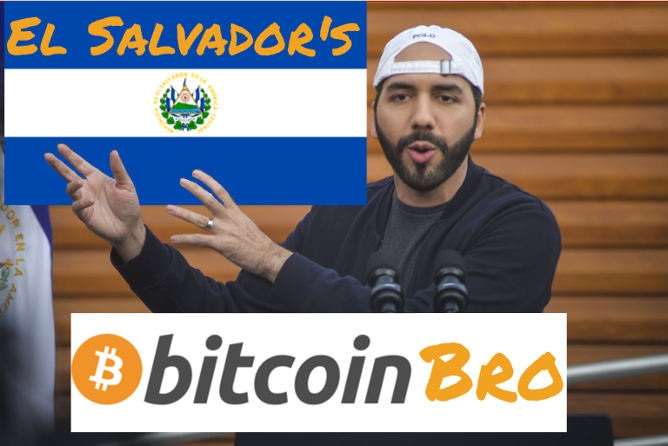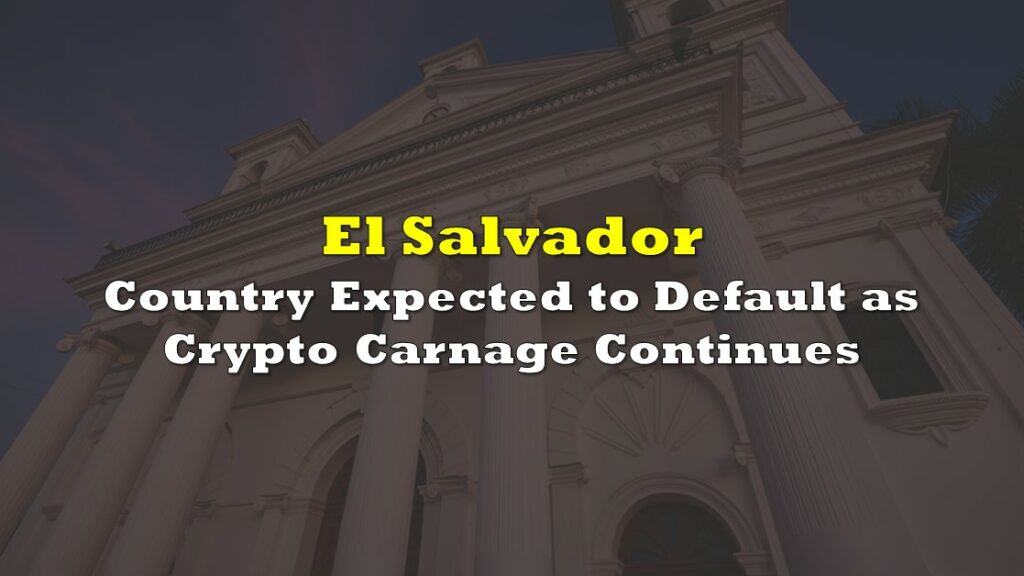International media most recently had occasion to pay any attention at all to the tiny Central American republic of El Savador this past January, when the IMF publicly urged the country to, please, reverse its September 2021 decision to make bitcoin legal tender. The bank almost surely chose to make that appeal at that time because bitcoin was fresh off a 52% haircut from its peak only two months prior, and it would have been a much tougher sell in November, when their new currency of record was up 38% since its adoption in terms of the American fiat that the IMF slings.
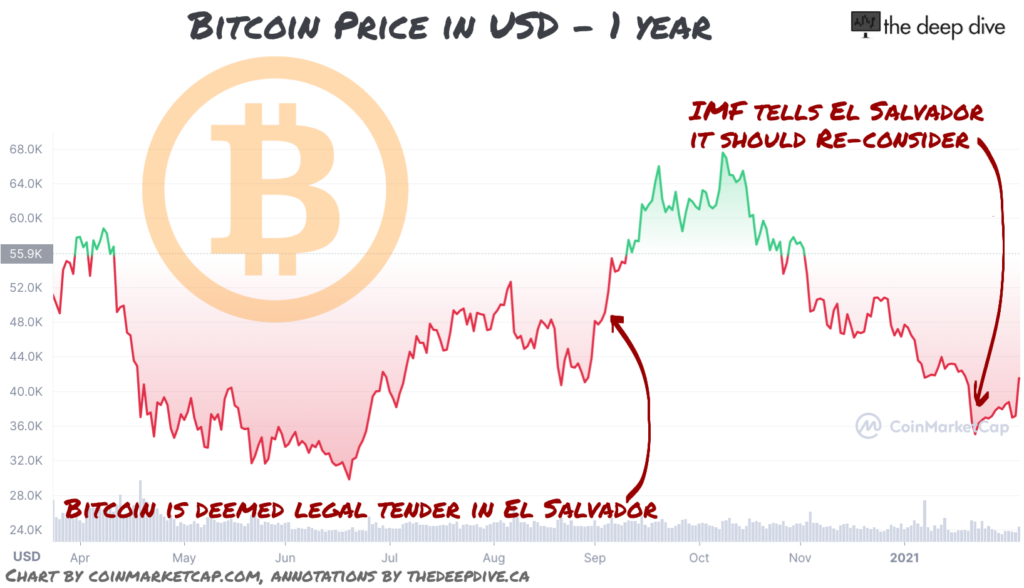
But the timing didn’t matter and the appeal didn’t stick. El Salvador still officially requires that bitcoin be an available settlement currency where available, along with the US dollar. This is unique in the world, and the most interesting aspect might be how it got there.
The El Salvador Bitcoin Bro

The unconventional move comes courtesy of President Nayib Armando Bukele Ortez (Nayib Bukele), who came to power in 2019 at the helm of the center-right Grand Alliance for National Unity (GANA). His successful GANA candidacy followed a period of political homelessness, during which the former Mayor of San Salvador was expelled from the left wing FMLN party for sowing division within the party.
He then formed a Nueva Ideas party, which met severe opposition from both the FMLN and the more right wing ARENAS party, vestiges of the opposing factions of the El Salvadoran Civil war, which killed an estimated 75,000 people between 1979 and 1992. The parties worked together to have Nueva Ideas’ official party status taken away, leaving Bukele with no official banner to run under. GANA, apparently, saw the potential in a candidate whose impedance was the first thing the two establishment parties could agree on in recent memory, and it paid off; Bukele won a convincing victory in the February 2019 presidential election, and became the first president since the civil war not affiliated with ARENAS or FMLN.
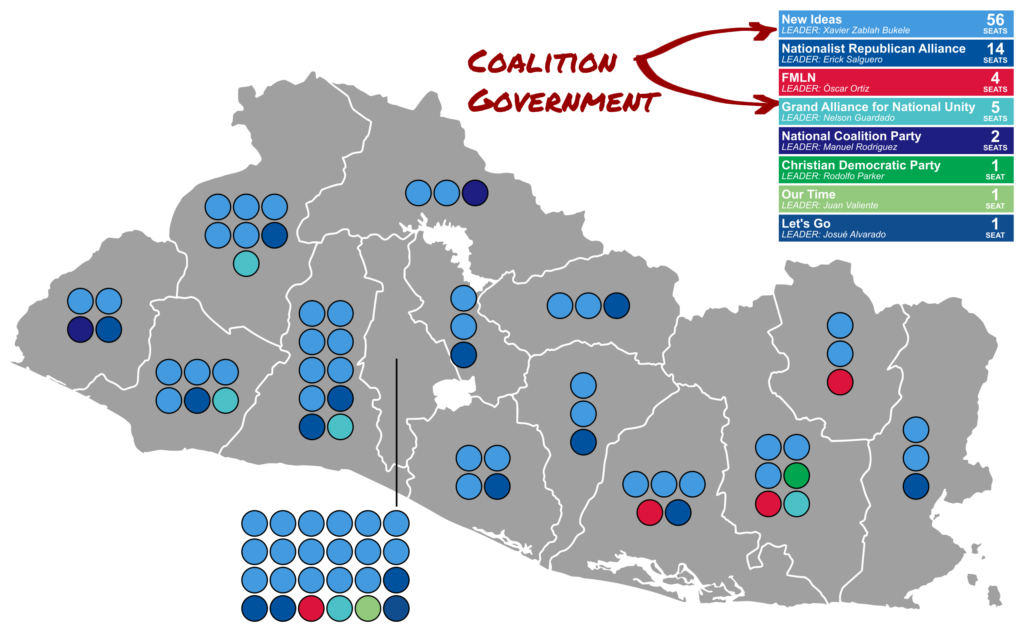
The GANA-Neuevas Ideas coalition then won a convincing majority in the February, 2021 legislative assembly elections, giving him a strong mandate to govern, which he promptly used to make Bitcoin legal tender. The move wasn’t a popular one when it happened, and it isn’t popular now. It’s drawn widespread protests, and the most generous polling only puts about 1/4 of Salvadorans in favor of the move. Bitcoin ATMs rolled out to facilitate the distribution of the new legal tender have been regularly vandalized and burnt. But young Nayib remains un-discouraged.
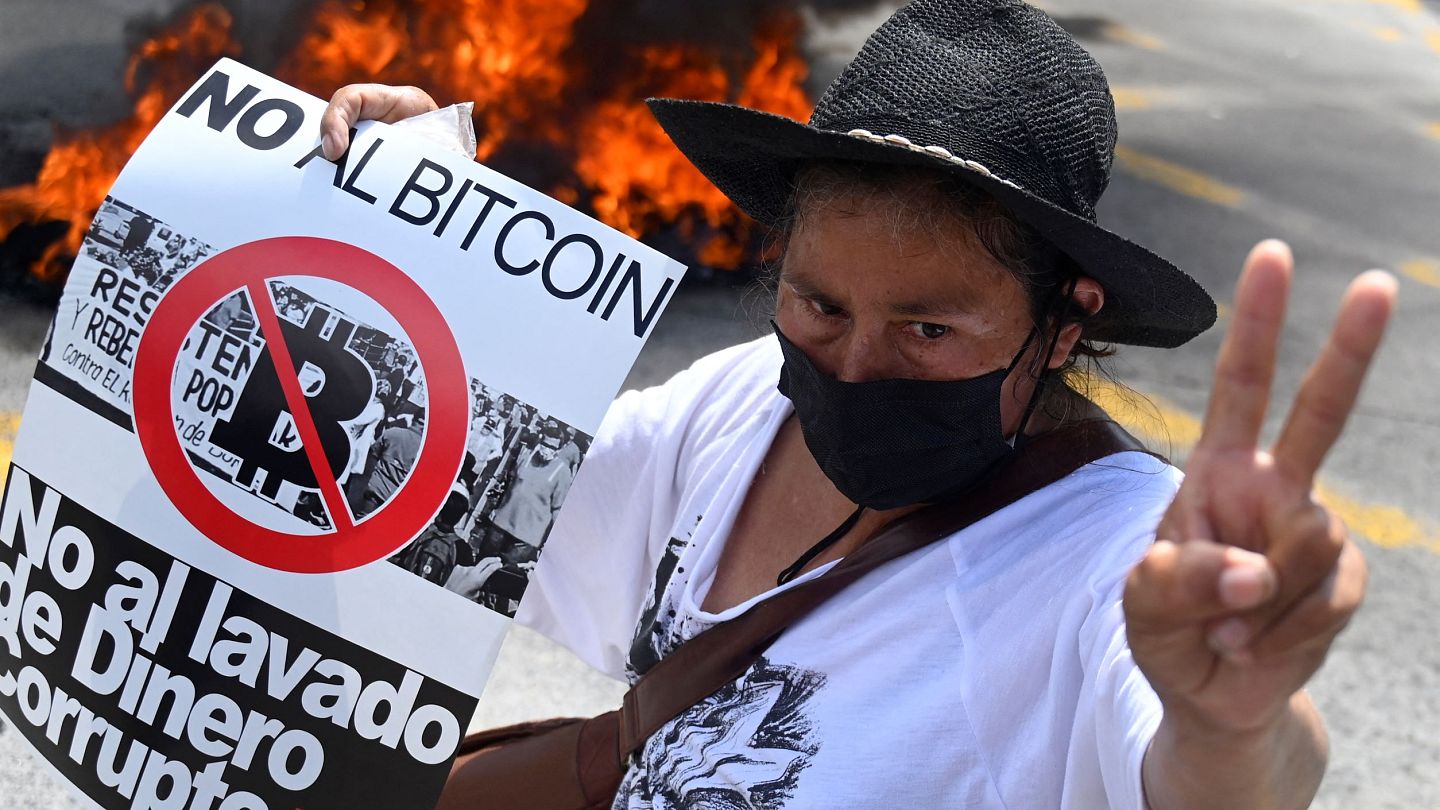
The Republic has announced plans to build a bitcoin city at the base of a volcano, where miners are powered geothermally. It’s the type of on-paper stunt one might expect out of a micro-cap stock promotion: execution unlikely, best case is it buys them some time. Because, much like venture stage micro caps, El Salvador is working with limited resources.
Colonial beginnings
El Salvador has no significant reserves of natural resources, so began its economic life as a colonial plantation state, and remained an agricultural economy throughout the period in which it gained its independence from Spain. The pattern is a familiar one; peasant farmers rising up against plantation-owning overlords, and being beat back by military force. The plantations in question mostly produced indigo, used to make fabric dyes, before synthetic dies put it out of business when the world industrialized.
In the 1920s, the land-owners of El Salvador consolidated and expanded their control of the newly-important coffee crop by eliminating the indigenous people in the mountain regions suitable for coffee growing. Then, the global economy fell into depression, prices of coffee and sugar tanked, people started to rise up again, and the land owners weren’t having it. Coups and military rule started in 1931, and lasted through 1979 and into the civil war period.
President Maximilliano Hernadez Martinez, having taken over in a 1931 coup, executed 10,000 communists in 1932 to set the tone, and proceeded to emulate the European fascists of the time, at the expense of the indigenous peoples and labour organizers. El Salvador continued as a de facto plantation state until the neo liberal global expansion of the 1950s and 1960s.
Meet the New Boss, same as the Old Boss
The post WWII period saw a great deal of foreign investment in El Salvador, and that capital started to loosen the control of the 14 plantation families who had controlled the country since colonial time.
The trouble with an agrarian economy is that there is only so much land to go around. The foreign corporate money taking over from the colonial money in the land-consolidation business wasn’t in any more of a sharing mood than its predecessors, and had the backing of the US government who, in a new ideological promotion to get the word out about their foreign policy, were ready to eliminate anything that even looked like a communist uprising for free. With death squads running around discouraging any kind of fight for a larger stake, the only thing left for working people to do was head to somewhere they could make money, and send it back home.
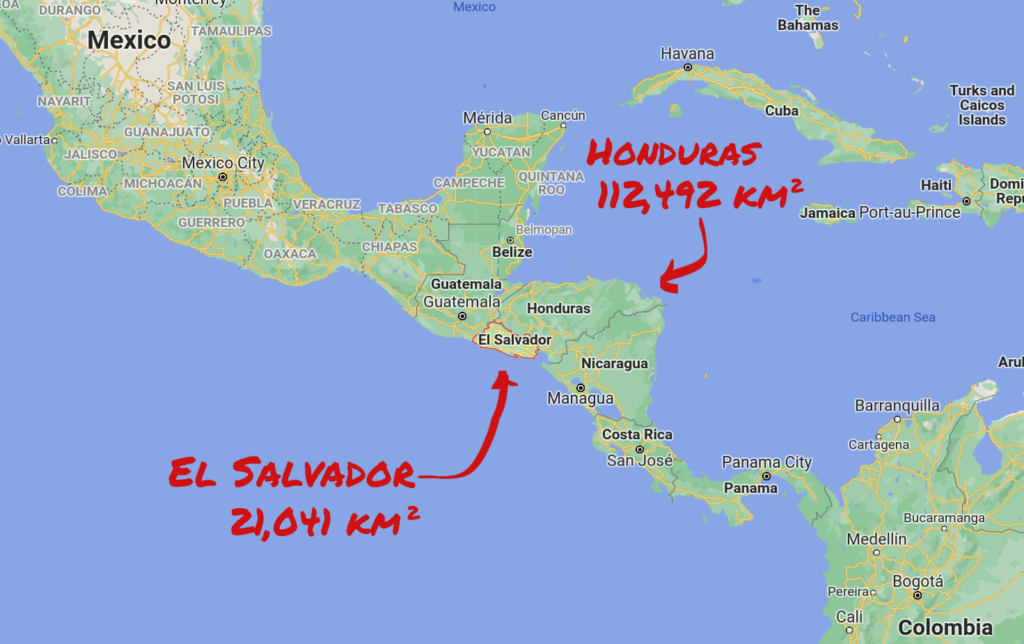
In neighboring Honduras, there was a lot more land that needed a lot more labour, much of it undeveloped, and suitable for farmers to make a start. Salvadorans moved north and got much of it started over the 1940s and 1950s. The Honduran government, at the behest of the United Fruit Company, wasn’t having it. It enacted land reforms in 1962 that would remove title from Salvadorans in Honduras by 1967.
By 1969, the objectively fascist law had displaced a great many Salvadoran immigrant farmers, and tensions boiled over at the third and deciding game of a FIFA World Cup qualifier (El Salvador won 3-2 in extra time). The Salvadoran government sent in the military, which made quick progress, and was pressing up against the Honduran capital city of Tegucigalpa, when the Washington D.C. based Organization of American States, decided they weren’t having it. The OAS threatened sanctions to arrange a ceasefire, and the El Salvadoran government had to back off.
Naturally, Honduras kept the United Fruit Co. law about Honduran ownership of Honduran farm land, and the 300,000 Salvadorans had to go back to a home country that couldn’t support them in the first place as refugees. It was pretty bleak, and they eventually went back to fighting for a bigger share of the wealth being created in local agriculture, and the growing number of textile factories. They formed workers collectives and unions and struck for higher pay. The land owners and US-backed industrialists, predictably, weren’t having it. They called in the national guard to crack some heads, and turned the unions, who had nothing left to lose, into leftist guerrilla factions who banded together to form the Farabundo Martí National Liberation Front, or FMLN.

In 1980, with tensions between El Salvador’s military government and the FMLN high, the Arch Bishop of El Salvador, Oscar Romero, penned an open letter to president Jimmy Carter asking him to suspend US military aid to the El Salvador military regime who, by then, had death squads running around sending a message. Romero was promptly assassinated, and military snipers used his funeral as an occasion to pick off a further 42 leftist workers who hadn’t yet gotten the hang of the necessity for a low profile in the guerrilla business.
A UN inquiry into the assassinations found that they were orchestrated by elements of the El Salvador military, who presumably didn’t like the idea of no longer being paid. The Reagan administration, taking over for Carter, didn’t see assassinating a bishop and the people crying about it as any reason to cut military funding. Reagan was all about dirty wars against leftist guerrillas, and would be damned if some filthy commies were going to get the idea they ran the place. The El Salvadoran Civil War continued until 1992, when the US-backed military government decided to negotiate the FMLN’s inclusion in polite society, rather than continue fighting.
The coffee thing is old news, but McDonald’s is VERY excited to open up new territory…
By then, the globalization of the world economy was well underway, and no agrarian economy would be able to sustain any country. Neo liberal global capitalism did its best over the post civil-war period to grow El Salvador’s economy the only way it knew how: through the installation of franchise outposts of multi-national corporations and the service businesses that propagate them.
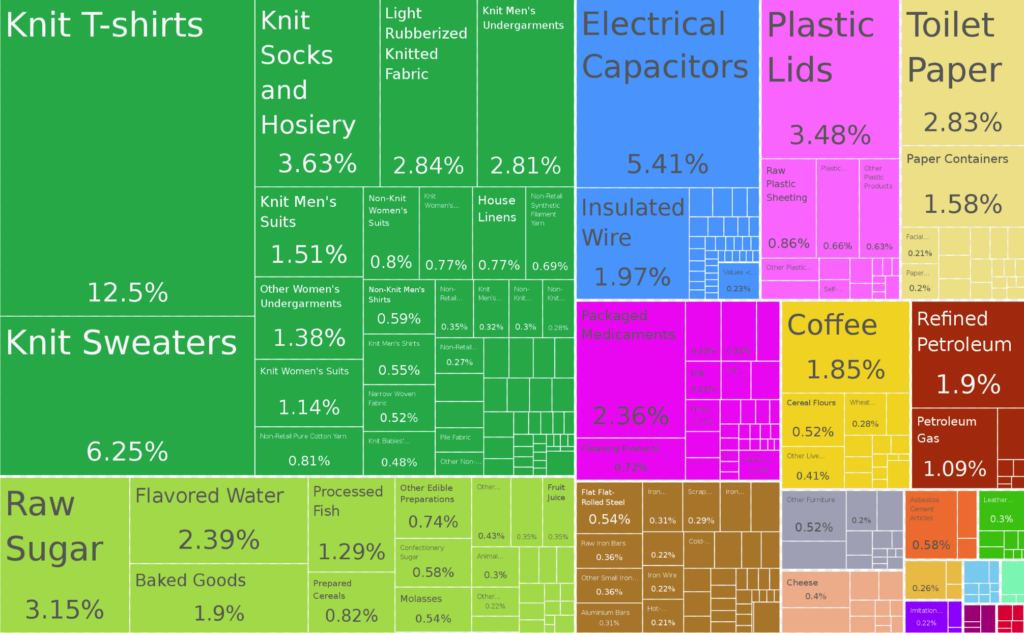
Foreign investment developed some exports in the textile industry, but didn’t make a material change in the economic profile of the country; the poverty was still (and is still) so dire and prevalent as to make labour its primary export. Today, $6 billion a year is sent back to El Salvador in the form of remittances.
The sparse industrialization served to foster and propagate a merchant class of sorts. Local business leaders who could get along well enough with everyone that they could put some foreign money to use at something other than helping workers gain equity in anything managed to thrive. It was out of that merchant class that emerged one Armando Bukele Kattan, whose son Nayib would later become president.

Bukele the elder was the son of Palestinian immigrants to El Salvador. He was a chemist and a religious leader who was active in the Kiwanis Club. He operated in various businesses, including pharmaceuticals and textiles, and started a large, tight-knit family.
Bukele Kattan’s position as an Imam and founder of four different mosques allowed for him to keep good relations with the FMLN guerrillas throughout the war without losing his social standing or commercial interests. In 1999, when 20 year old future president Nayib Bukele had started a fledgling advertising agency, he used his familial connections to the FMLN to convince the FMLN to be his first client. In Nayib’s telling, his agency was the only one who had bothered to ask.
The more modern FMLN was able to grow its political purchase, and first capture the Presidency in 2009. It would hold it through 2019 when Nayib Bukele, complete with the outsider status inherent in a fresh split from the party, was able to shake things up and be come the new, young, fresh-ideas president.
But new ideas don’t change the economic landscape or the facts on the ground. El Salvador is still a country with GDP of $22 billion, and limited prospects for growing it. The population is now largely urbanized, and has grown to the point that a meaningful redistribution of farm land is unlikely to make an impact of significance, and would risk angering the US backers that keep him in modern weaponry and police. Besides: radical commie stuff isn’t really a second generation merchant’s style. Bukele owned an ad agency and a Yamaha dealership; the “new ideas” in this party were bound to be mostly rooted in commerce.
To a 41 year old devotee to the gods of the markets, anxious to bring long-awaited prosperity to the people who believe in him, cryptocurrency is alluring. It’s a money that can’t be controlled by the US government (or any government). Making it legal tender adopts its symbolic independence from the US for El Salvador, on the record, without the carnage that actually cutting ties would invite. When the US Senate passed a resolution for the State Department to study El Salvador’s adoption of bitcoin and make a plan to mitigate the potential effects to the US economy, it was a prime opportunity for Bukele to act like he was finally the one who wasn’t having it:
OK boomers…
— Nayib Bukele 🇸🇻 (@nayibbukele) February 16, 2022
You have 0 jurisdiction on a sovereign and independent nation.
We are not your colony, your back yard or your front yard.
Stay out of our internal affairs.
Don’t try to control something you can’t control 😉
https://t.co/pkejw6dtYn
It isn’t clear if Bukele’s performative proclamation of independence ends in a winky face emoji to cause maximum annoyance, or because he knows it’s a joke. El Salvador is absolutely something the US can control, and something the US does control. Making bitcoin legal tender doesn’t change that in the near term, the same way that buying bitcoin isn’t going to make a person rich in the near term. But the appeal is: it lets them dream on it.
Coming up in part 2 of our El Salvador bitcoin series, we’re going to look at the economics of a decentralized currency being adopted by this impoverished republic. Stay tuned.
The author has no securities or affiliations related to this organization. Not a recommendation to buy or sell. Always do additional research and consult a professional before purchasing a security. The author holds no licenses.

